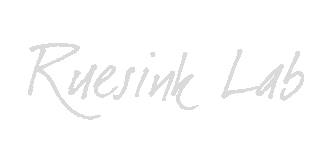|
|
Ruesink, J.L. Across-habitat comparison of interactions between native species and an introduced oyster. Marine Ecology Progress Series, in revision.
Ruesink, J.L., B.E. Feist, C.J. Harvey, J.S. Hong, A.C. Trimble, L.M. Wisehart. 2006. Changes in productivity associated with four introduced species: Ecosystem transformation of a “pristine” estuary. Marine Ecology Progress Series 311:203-215.
Ruesink, J.L. and L. Collado-Vides. 2006. Modeling the increase and control of Caulerpa taxifolia, an invasive marine macroalga. Biological Invasions 8(2):309-325.
Ruesink, J.L., H.S. Lenihan, A.C. Trimble, K.W. Heiman, F. Micheli, J.E. Byers, M. Kay. 2005. Introduction of non-native oysters: ecosystem effects and restoration implications. Annual Review of Ecology, Evolution and Systematics 36:643-689.
Buhle, E.R., M. Margolis and J.L. Ruesink. 2005. Bang for buck: cost-effective control of invasive species with different life histories. Ecological Economics 52:355-366.
Ruesink, J.L. 2005. Global analysis of factors affecting the outcome of freshwater fish introductions. Conservation Biology 19:1883-1893.
Ruesink, J.L. 2003. One fish, two fish, old fish, new fish: which invasions matter? Pages 161-178 in (S.A. Levin and P.M. Kareiva, eds.) The Importance of Species: Expendability and Triage. Princeton University Press.
Ruesink, J., M. Groom, I. Parker and P. Kareiva. 1995. Reducing the risks of nonindigenous species introductions. BioScience 47: 465-477.
|
|
|
Ruesink, JL., E.O’Connor and G.B. Sparks. 2006. Biodiversity and ecosystem functioning: exploring principles of ecology with agricultural plants. American Biology Teacher 68(5):285-292.
Raffaelli D., B.J. Cardinale, A.L. Downing, KA.M. Engelhardt, J.L. Ruesink, M. Solan, D.S. Srivastava. 2005. Reinventing the wheel in ecology research? Response. Science 307:1875-1876.
Solan, M., B. Cardinale, A. Downing, K. Engelhardt, J. Ruesink and D. Srivastava. 2004. Extinction and ecosystem function in the marine benthos. Science 306:1177-1180.
Ruesink, J.L. and D.S. Srivastava. 2001. Numerical and per capita responses to species loss: mechanisms maintaining ecosystem function in a community of stream insect detritivores. Oikos 93:221-234.
|
|
|
Salomon, A.K., J.L. Ruesink and R.E. DeWreede. 2006. Population viability, ecological processes and biodiversity: Valuing sites for reserve selection. Biological Conservation 128:79-92.
Jenkins, C., M.E. Haas, A. Olson and J.L. Ruesink. 2002. Impacts of trampling on a rocky shoreline of San Juan Island, Washington. Natural Areas Journal 22(4):260-269.
Salomon, A.K., J.L. Ruesink, B.X. Semmens and R.T. Paine. 2001. Incorporating human and ecological communities in marine conservation: an alternative to Zacharias and Roff. Conservation Biology 15:1452-1455.
Driskell, W.B., J.L. Ruesink, D.C. Lees, J.P. Houghton and S.C. Lindstrom. 2001. Long-term signal of disturbance: Fucus gardneri after the Exxon Valdez oil spill. Ecological Applications 11:815-827.
Paine, R.T., J.L. Ruesink, et al. 1996. Trouble on oiled waters: lessons from the Exxon Valdez oil spill. Ann. Rev. Ecol. Syst. 27: 197-235.
|
|
|
Moore, J.W., J.L. Ruesink and K.A. MacDonald. 2004. Impact of supply side ecology on consumer-mediated coexistence: evidence from meta-analysis. American Naturalist 163:480-487.
Ruesink, J.L., G.C. Roegner, B.R. Dumbauld, J.A. Newton and D. Armstrong. 2003. Contributions of oceanic and watershed energy sources to secondary production in a northeastern Pacific estuary. Estuaries 26:1079-1093.
Holsman, K.K., D.A. Beauchamp, D.A. Armstrong and J.L. Ruesink. 2003. The necessity for intertidal foraging by estuarine populations of sub-adult Dungeness crab, Cancer magister: Evidence from a bioenergetic model. Estuaries 26:1155-1173.
Ruesink, J.L., K.E. Hodges and C.J. Krebs. 2002. Mass-balance analyses of boreal forest population cycles: merging demographic and ecosystem approaches. Ecosystems 5:138-158.
Ruesink, J.L. and K.E. Hodges. 2001. Trophic mass-balance models of the Kluane Boreal Forest Ecosystem. Pp. 464-490 in (C.J. Krebs, S. Boutin and R. Boonstra, eds.) Ecosystem Dynamics of the Boreal Forest: The Kluane Project, Oxford University.
Ruesink, J.L. 2000. Assessing density dependence using intraannual counts. Ecology 81:3377-3390.
Ruesink, J.L. 2000. Intertidal mesograzers in field microcosms: linking laboratory feeding rates to community dynamics. J. Exp. Mar. Biol. Ecol. 248:163-176.
Ruesink, J.L. 1998. Variation in per capita interaction strength: thresholds due to nonlinear dynamics and nonequilibrium conditions. Proc. Nat. Acad. Sci. 95(12): 6843-6847.
Ruesink, J.L. 1998. Diatom epiphytes on Odonthalia floccosa: the importance of extent and timing. J. Phycology 34(1): 29-38.
|
|
|
Srivastava, D.S. and J.L. Ruesink. 1998. Population growth and environmental destruction: It isn't that simple! Bull. Ecol. Soc. Am. 79: 219-221.
Ruesink, J.L. 1997. Coral injury and recovery: matrix models link process to pattern. J. Exp. Mar. Biol. Ecol. 210: 187-208.
Ruesink, J.L. 1994. Chalk grassland snails: site comparisons and implications for management. J. Molluscan Studies 61: 9-21.
Harvell, C.D., W. Fenical, V. Roussis, J.L. Ruesink, C.C. Griggs and C.H. Greene. 1993. Local and geographic variation in the defensive chemistry of a West Indian gorgonian coral (Briareum asbestinum). Marine Ecology Progress Series 93:165-173.
Ruesink, J.L. 1992. The contribution of epiphytes to algal biodiversity in the northeast Pacific. Northwest Envir. J. 8: 140-142.
Ruesink, J.L. and C.D. Harvell. 1990. Specialist predation on the Caribbean gorgonian Plexaurella spp. by Cyphoma signatum (Gastropoda). Mar. Ecol. Prog. Ser. 65: 265-272.
|

